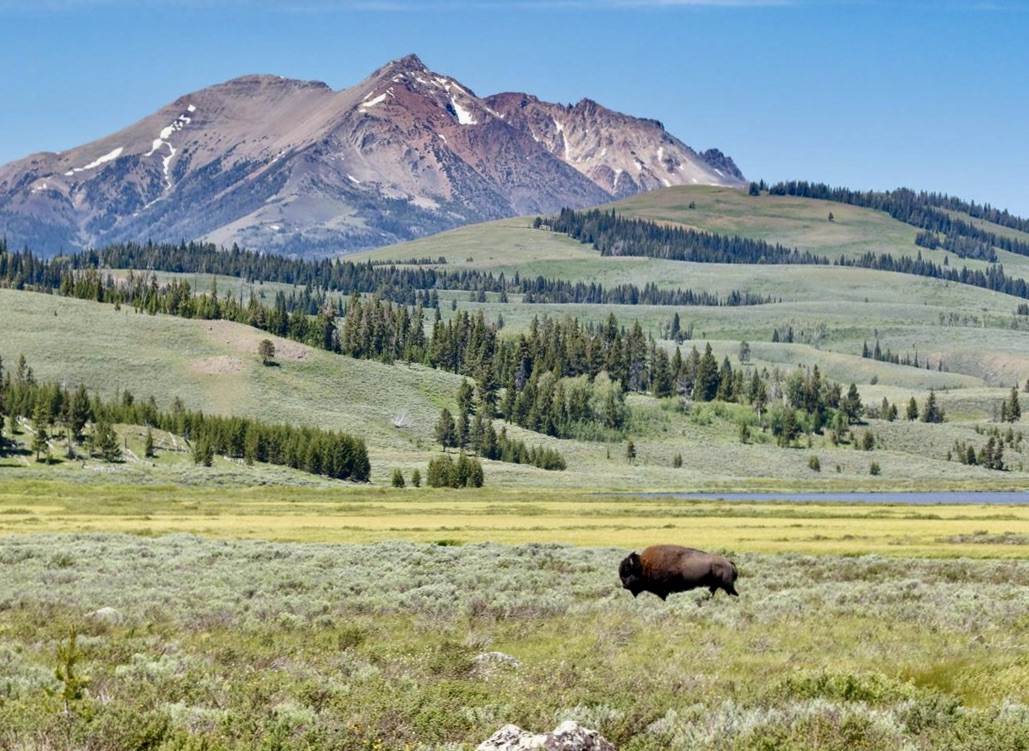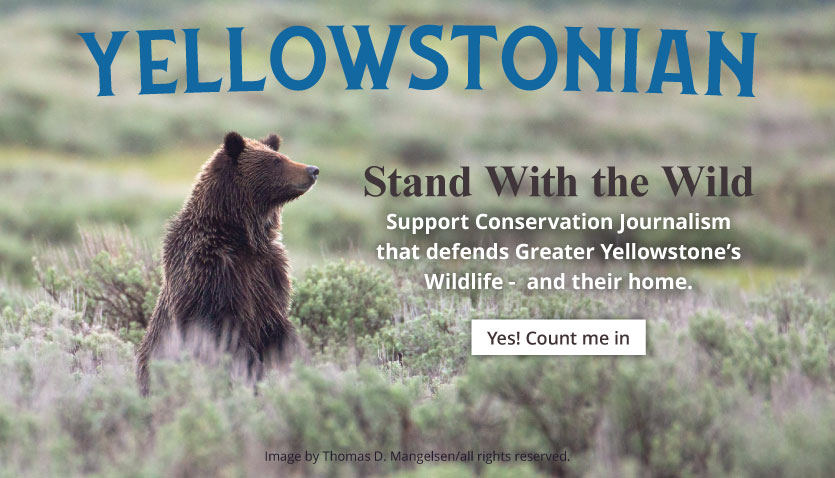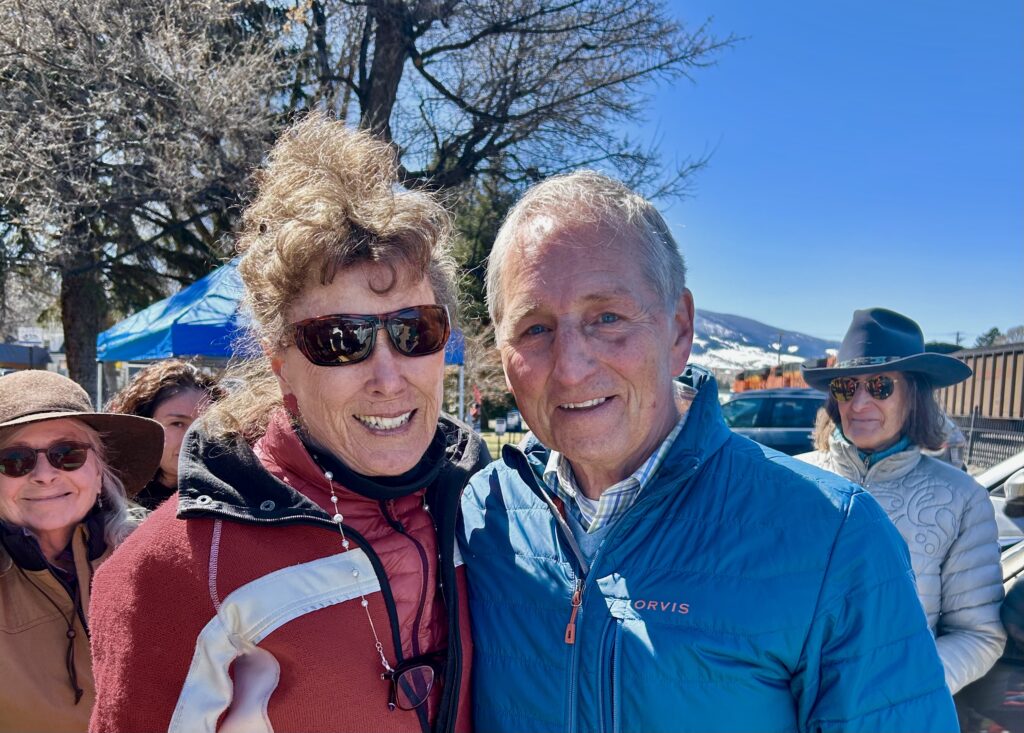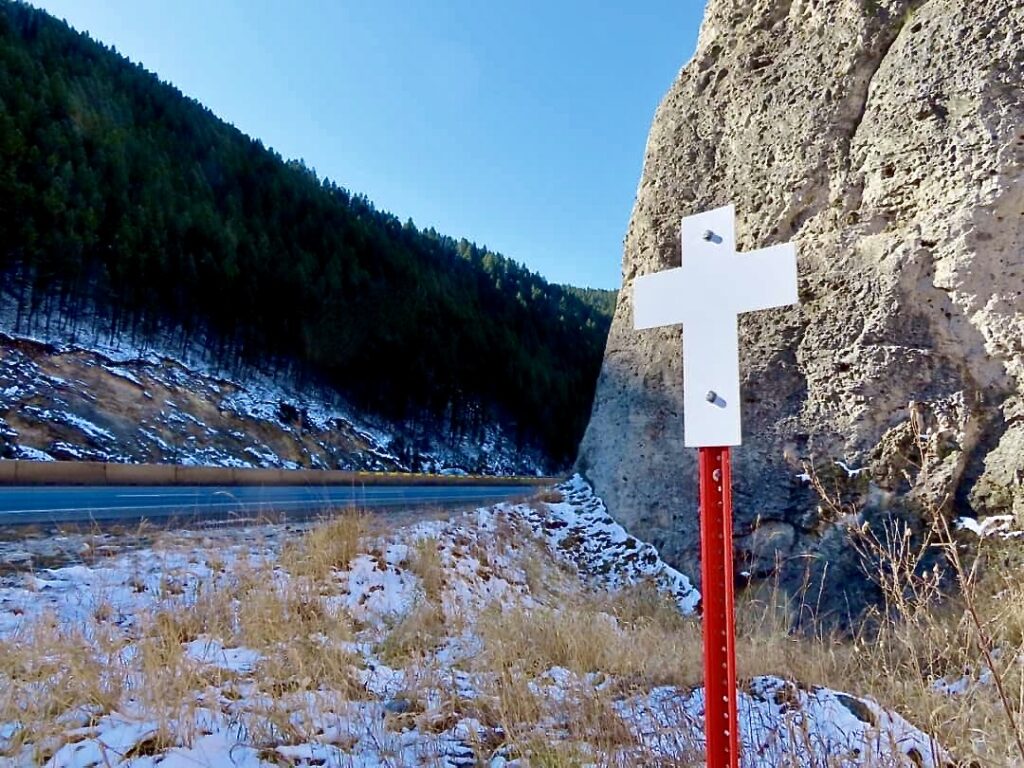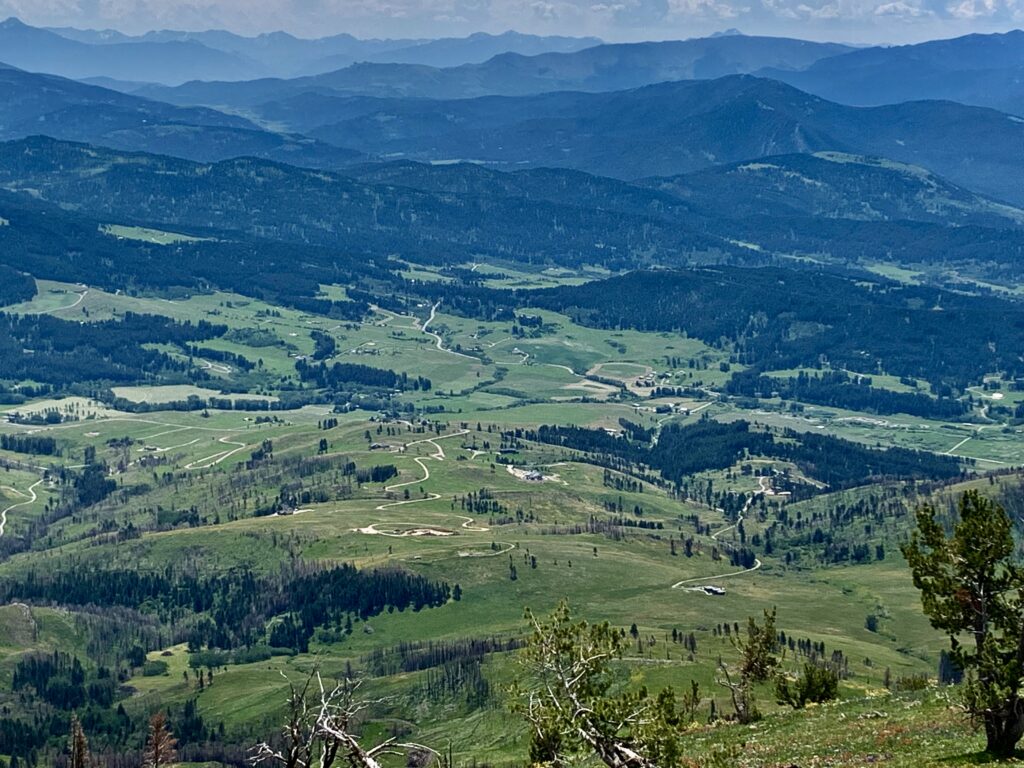EDITOR’S NOTE: We at Yellowstonian believe it is essential for our readers to understand the geographic context of the Gallatin Mountains and their ecological significance for wildlife in the Greater Yellowstone region, for it provides the baseline for understanding the poignance of the essay below. The Gallatin Range runs southward from Bozeman in Montana for nearly 100 miles into the western side of Yellowstone National Park in Wyoming. It is straddled on the east by Paradise Valley and the west by the Gallatin Canyon and the sprawling resort community of Big Sky. Much of the Gallatins reside within the boundaries of the Custer-Gallatin National Forest and is home to a rich diversity of wildlife, especially large mammals, imperiled species and fish greater than what exists in 45 of the Lower 48 states. It is considered both a vital, still-functioning seasonal crossroads for wildlife, a breeding and rearing area for many species and is a biological appendage of sorts of Yellowstone Park. It is not just another generic backyard public land there to be interpreted as “underutilized” for outdoor recreation; it is in some ways parallel in importance to Greater Yellowstone what the Arctic National Wildlife Refuge is to preserving the ongoing health of wildlife in Alaska. Scientists say the best way of protecting wildlife is to safeguard the best remaining secure habitat that, in Greater Yellowstone, is facing huge conserving human pressures, some that are permanent and irreparable. The highest form of federal land protection is wilderness. What scientists below are scrutinizing is a plan crafted by the Gallatin Forest Partnership, led by the Greater Yellowstone Coalition, The Wilderness Society, Wild Montana, the Southwest Montana Mountain Bike Association and Winter Wildlands Alliance that proposes to set aside less land as wilderness in favor of accommodating outdoor recreation, levels of which, if unchecked, are expected to surge in years to come. As detailed reference points for what Hansen, Whitlock and Maxwell are saying, read some of Yellowstonian‘s investigative reports about those pressures at the bottom of this piece.
Analysis by Drs. Andrew Hansen, Cathy Whitlock and Bruce Maxwell
The presence of wilderness in the Greater Yellowstone Ecosystem (GYE) and elsewhere is essential to support viable wildlife populations and healthy ecosystems.
Our environmental community is currently debating how best to protect wilderness in Greater Yellowstone, with a focus on the Hyalite-Porcupine-Buffalo Horn Wilderness Study Area in the Gallatin Range.
The Forest Service is charged with managing Wilderness Study Areas to maintain the wilderness character as it existed in 1977 until Congress acts to permanently protect it as wilderness or release it for other uses. Some groups have proposed wilderness protection for all Wilderness Study Areas in the Northern Rockies, including the GYE.
In contrast, the Gallatin Forest Partnership proposes releasing about 40 percent of the Hyalite-Porcupine-Buffalo Horn WSA from wilderness protections and placing those lands in new categories that emphasizes recreation, mentions watershed and wildlife protection, and includes vegetation management and logging. f
As scientists with long histories of research in the region, we urge that any policy changes be informed by rigorous scientific assessment of the consequences of recreation, climate change, forest management, and urban sprawl, to wildlife and overall ecological health in the GYE.
Outdoor recreationists are said to be the best conservationists. However, scientific studies are increasingly finding that outdoor recreation often has negative impacts on wildlife.
Seventy percent of published scientific papers on this topic indicate that richness and abundance of wildlife decline in areas with higher levels of recreation. Recreation has been identified as a leading factor in the endangerment of native animal and plant species on federal lands.
Species of high concern in the Gallatin Range include wolverine, grizzly bear, and elk. Wolverine avoid areas of motorized and nonmotorized winter recreation, resulting in habitat loss and degradation of moderate- and high-quality habitats.
“Seventy percent of published scientific papers … indicate that richness and abundance of wildlife decline in areas with higher levels of recreation. Recreation has been identified as a leading factor in the endangerment of native animal and plant species on federal lands. Species of high concern in the Gallatin Range include wolverine, grizzly bear, and elk.”
In Yellowstone National Park, grizzlies are twice as likely to use an area where humans are prohibited than where access is granted. Research shows that elk and most wildlife avoid humans on trails, with avoidance strongest for mountain biking and motorized vehicles compared with hikers and horseback riders.
Recreationalists were found to often not understand their negative impacts on wildlife.
The consequences of unprecedented climate change in the region — increasing temperature, reduced snowpack, earlier snowmelt, and more extreme events — are already, and will continue, to impact the ecosystem indefinitely. The wildlands of the GYE are a critical climate refuge in the Rocky Mountain region, maintaining habitable conditions as other areas become climatically unsuitable, fragmented, and experience increased recreation.
Even within Greater Yellowstone, habitats for many species are shrinking under climate warming, such as the snow-dependent wolverine.
Climate change also influences recreational expectations and the intensity and footprint of backcountry use. In the future, recreationalists will exert ever-greater pressure on wildlands as areas of snow shrink to higher elevations.
Increased motorized and nonmotorized use in the backcountry accelerates the negative impacts of climate change through the introduction and spread of weeds, increased wildfire ignition, and greater trail erosion during extreme weather.
Intensified recreation and logging act together with climate change to functionally squeeze wildlife into smaller areas.
Proposed policies that allow commercial logging, thinning, and fuels treatment within the HPBH WSA will alter critical wildlife habitat in ways not fully understood. Logging can harm wildlife by destroying and fragmenting habitats and removing large trees that wildlife need to survive.
Fuels reduction projects remove protective cover, making some species more vulnerable to predators. Road expansion allows invasive weeds to spread.
Because the Hyalite-Porcupine-Buffalo Horn WSA is critical for conservation in the GYE, we recommend the following be done before any policy changes.
••••Conduct rigorous scientific research on the consequences of increased recreational use, climate change, and forest management in the Gallatin Range.
•••• Ensure adequate resources to monitor and address recreational use and impacts on ecological health.
•••• Develop programs to educate recreation users on how to reduce negative ecological impacts.
•••• Encourage federal and state managers in the GYE to evaluate all the WSAs to develop broad coherent strategies that promote ecological health.
We expect that scientific assessments will conclude that wildlife will best be served if all of the Hyalite-Porcupine-Buffalo Horn WSA is kept as wilderness. The Gallatin Range is too important to wildlife for land-use decisions to be made without rigorous scientific information.
Andrew Hansen is an Emeritus Professor of Ecology, Montana State University; Cathy Whitlock is a Regents Professor Emerita of Earth Sciences, Montana State University and a member of the National Academy of Sciences; and Bruce Maxwell is an Emeritus Professor of Land Resources and Environmental Sciences, Montana State University. Their record of conducting peer reviewed research, cumulatively, into the impacts of sprawl, climate change and human uses of landscapes is extensive.
Topics highlighted by the scientists in piece above:
Proliferating Industrial Outdoor Recreation on Public Lands:
Wreckreation And Our National Obsession To Love Wild Places To Death
Sprawl:
Grizzly 399 In Retrospect, Fate Of Her Last Cub “Spirit,” And What’s Next For Bear Delisting? In this interview by Todd Wilkinson with Tom Mangelsen and Dr. Chris Servheen, who oversaw US grizzly bear recovery for 35 years, Servheen notes how rising development on private land, rising recreation pressures on public land and climate change altering vital food sources and water availability stand to squeeze grizzlies out of key habitat, affecting not only them but many species
The Spillover Effects Of Big Sky’s Ravenous Appetite For More
Preventing The De-Wilding of Greater Yellowstone: An Ecosystem Under Siege From Runaway Sprawl
Subdivisions: As Impactful To Wildlife Over Time As Clearcuts, Mines And Energy Combined In this and stories below, evidence is presented about how proliferating exurban sprawl on private land is permanently destroying wildlife habitat in many Greater Yellowstone valleys, creating concerns about water, transforming rural ways of life and causing budgetary headaches for counties and taxpayers
Wild Odysseys: Greater Yellowstone Migrations Hold An American Ecosystem Together
Loving Our Wild Backyard: How Can We Save the Mini-American Serengeti? A recording of Todd Wilkinson’s discussion of sprawl with five land protection experts at the Museum of the Rockies in a widely viewed event sponsored by Yellowstonian, Gallatin Valley Earth Day, the Center for Large Landscape Conservation, Gallatin Valley Land Trust, NumbersUSA, Friends of Park County and the Gallatin Wildlife Association
Meet The Real Madison—And Why It’s Called ‘A Mini-American Serengeti’
What Happens When Greater Yellowstone’s Conservation Movement Goes MIA On Sprawl?
Climate change:
Montana Climate Assessement, a scientific report on documented trendiness and what is to come with Dr. Cathy Whitlock serving as lead co-author
Greater Yellowstone Climate Assessment, a stand-alone report related to the above
Special edition of the journal Yellowstone Science on what the data is saying about changing temperature, precipitation/water and habitat in America’s first national park

